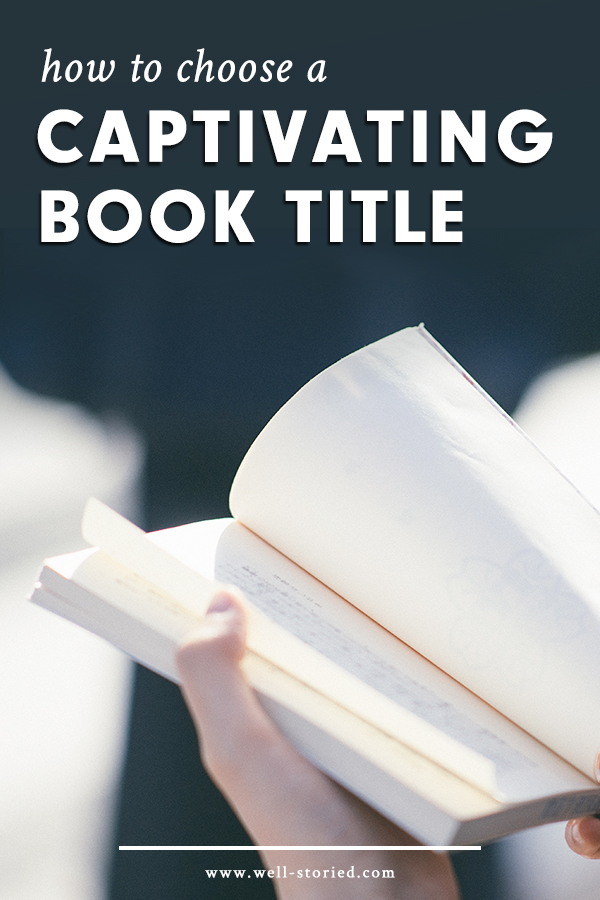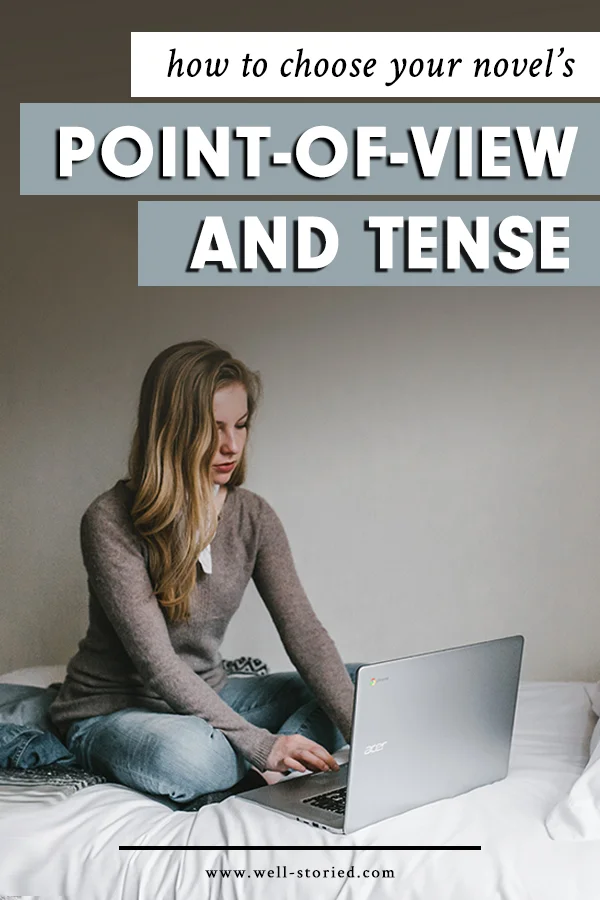Blog
How to Title Your Novel
Choosing the perfect title for a story is tough. There's no real process to it, no formula. Or is there?
Despite being one of my most requested articles, I delayed writing this piece on titling because I never quite knew what tips to offer. The whole process seemed so subjective! But the other week I had a revelation; there's far more of a science to choosing the perfect book title than I'd suspected.
After studying book titles pretty intensively these past few weeks, I realized that whether a book is plot- or character-driven often has a big impact on how it's titled. Sounds strange, right? But the data doesn't lie, writer. So if you're struggling to choose the perfect title for your latest story, buckle in. You're going to love today's breakdown.
Should You Fast-Draft Your Novel?
Do you follow me on Facebook or Twitter?
If so, you likely saw my recents polls in which I asked if you prefer longer or shorter content on She's Novel or a combination of both. Your answer? Both!
This was super exciting for me because I've only ever done long, in-depth content here on the blog but I've been accumulating quite a few shorter post ideas I've wanted to write up. Starting with–DRUMROLL PLEASE–fast-drafting!
This topic was actually suggested to me by my friend Jenn from The Paper Scientist and I thought it was especially apt because I'm currently fast-drafting my latest WIP, The Eaves of Fall.
Breaking Down The Hero's Journey Plot Structure
Writers, it's time to discuss one of my favorite storytelling topics: plot structure.
Today, in particular, we're going to break down a structure originally outlined by mythologist Joseph Campbell in his book The Hero With a Thousand Faces. The Hero's Journey is a classic plot structure that appears in many speculative fiction books, films, television shows, and other forms of media.
Four Tips for Writing When You’re Depressed
The Tortured Artist. It's society's idyllic image: beauty wrought of struggle, of madness. There's truly no creative stereotype I loathe more. The Tortured Artist so frequently pictured in film and television teaches that the best works cannot be produced unless one is battling demons, deep in the grip of dangerous substances, or struggling under the weight of mental illness.
As a writer who does live with mental illness — depression, to be exact — I can say from experience that such struggles have in no way improved my work. On the contrary, they regularly leave me feeling further demotivated and ashamed.
However, I have learned a thing or two about living my best writing life despite struggles with mental illness, and knowing that I'm not alone, I'd like to share those things with you today.
How to Find Your Ideal Reader (and why you should get to know them ASAP)
When I first began writing, I didn't have a clue who my future readers would be.
I wrote for myself, as I believe many writers do when they first begin. But I was eighteen at the time, wafting through the grey space between teenage- and adult-hood, and every time I matured as a person, my writing matured too. As a result, my stories were ever-changing, and I struggled to maintain a hold on the narratives I was trying to tell.
This is why, when I first came across the concept of an ideal reader, my interest immediately piqued. With it, however, came a million questions. What in the world is an ideal reader? Can you be your own? How can having a clear picture of your future readers help shape your stories for the better? Writer, we're breaking it all down in today's article, so let's get started!
Three Ways to Integrate Scene Cards Into Your Writing Process
Do you prefer working with tangible notes as you write?
Admittedly, I’m not a fan of hand-writing my work in the slightest. I complete nearly all of my brainstorming, outlining, drafting, revising, and editing in Scrivener. That said, I recently had the opportunity to try out printed scene cards courtesy of my friend and fellow author Jennifer Bull, and I had a blast playing around with all of their possibilities.
How did I use the scene cards Jenn designed as I worked? Let’s discuss three ways to integrate them into your writing process today!
How to Choose Your Novel's Point-Of-View & Tense
How you choose to structure and style your story's prose can make all the difference.
Two of the biggest elements that affect your prose are, of course, point-of-view and tense. Does it really matter if you write your book in first-person or third-person? In past or present tense? In some cases, yes. In fact, point-of-view and tense are a bit like the clothes you wear each day. They may not change who you are, but they do affect others' impressions of you.
And a good first impression can make all the difference, right? So today, writers, we're going to explore the kinds of impressions point-of-view and tense can make and how you can be sure to choose the right option for your story!
Guest Post: The 7 Habits of Highly Successful Authors
Hello, writers! Kristen here. Today, I'm excited to welcome my first guest writer of 2016 to the Well-Storied blog. Maria Ribas is a writer and literary agent and the blogger behind Cooks & Books, where she shares fantastic advice for fiction and non-fiction writers alike.
Today, Maria is here to talk to with us all about a few healthy habits highly successful authors practice that make literary agents want to jump for joy. If you're looking to build a successful career in publishing, these are the tips for you! Now without any further ado, I'll hand the reins over to Maria...
How to Build an Ideal Critique Partner Relationship
Life is better when you do it together — and your writing life often is, as well.
In a recent article here at Well-Storied, we discussed the importance of editing with objectivity. But sometimes, even the most objective lens we can conjure just isn't enough to help us craft the very best versions of our books. Sometimes, it's a second pair of eyes that can really make all the difference as we work to elevate our stories.
Of course, that second pair of eyes can come in many forms: alpha or beta readers, editors, and, as we're going to discuss today, critique partners. Just how valuable an experience can it be to work with a critique partner? And how can you go about finding and building such a relationship? Let's break down everything you need to know in today's article!
Guest Post: Four Lessons I Learned From Writing a Serial
Hello, lovely writers! Join me in welcoming today's guest teacher, author Mariella Hunt. Fresh off of the overwhelming success of her first serial, The Autumn Prince, Mariella has graciously agreed to share the lessons she's learned from her experience.
Interested in learning more? Grab a cup of tea, and read on!
.................................................
We live in a wonderful age in which there are many ways to tell a story.
Our self-expression is no longer limited to poetry, song, and acting; these days we also express ourselves through photography and 3D art. Human emotion can be captured through countless mediums our ancestors never imagined.
With personal blogs, we can tell stories immediately by clicking a button; nothing stops us from being heard. Recently I experimented telling a story this way, initiating a project that gave me insight on many things—for example, I learned what people look for in a story as well as the person telling it.
It's because I tried my hand at something I've been meaning to do for years: A serial.
19 Ways to Write Better Dialogue
For years, I struggled deeply with the dialogue in my stories. I didn’t have a natural knack for writing conversations that felt real and true to character, and I let this weakness deter me from striving to improve. But stories need dialogue, and my own was suffering for a lack of attention.
Finally, I decided that enough was enough. I began reading every bit of advice on writing dialogue that I could get my hands on. I studied the novels I read, and I rewrote the conversations in my stories again and again, until at last I began to see improvement.
More importantly, I came to understand dialogue as the complex literary powerhouse that it is.
Unfortunately, it’s this very complexity that can make quality dialogue so difficult to craft. That’s why I’m breaking down nineteen steps for writing better dialogue in today’s article, beginning with ten tips for crafting richer, more nuanced conversations.
Guest Post: How to Know if You Have a Story or a Topic
Sometimes the best lessons of our writing careers come from unexpected places.
Four years ago, I jetted off to New York to study publishing at NYU in a bid to make my English degree worth something. I expected to learn about business, not storytelling, but some of the best writing advice I ever received came from that course.
Every day, professionals from various roles in the publishing industry came to speak to the class. The goal was to teach us about how publishing worked and help us find our places within that industry, but it was also an amazing opportunity to learn about how stories come to life. No matter what aspect of the publishing world a person comes from, he or she is a career storyteller.
One of the best lessons I learned there came from a journalist specializing in long, in-depth articles (the kind of central stories you read in magazines like Time). He spoke about finding stories and pitching them to editors, hoping to get the green light. It's easy, he explained, to find something to write about. It's finding the angle -- the hinge point of an interesting story -- that's the hard part.











